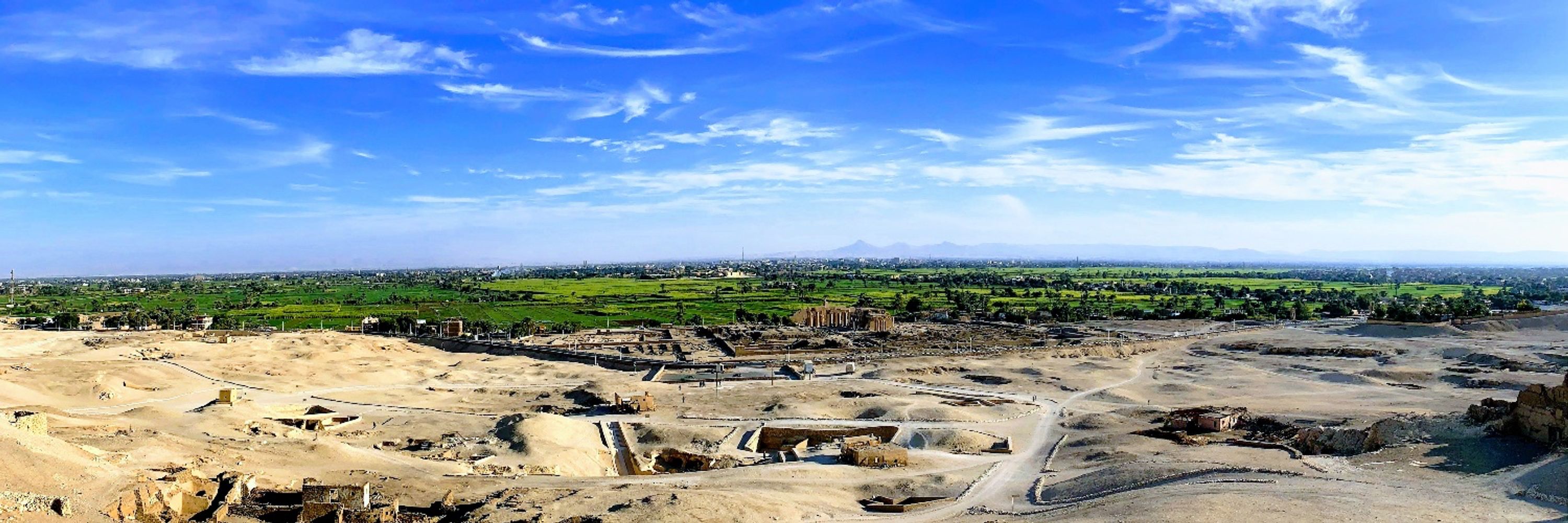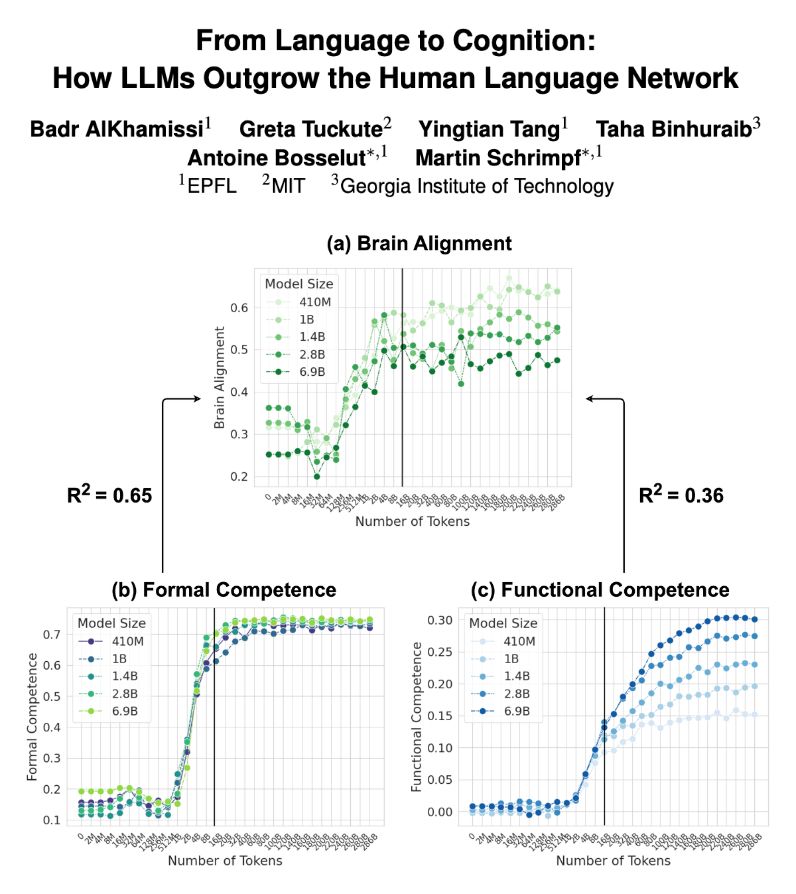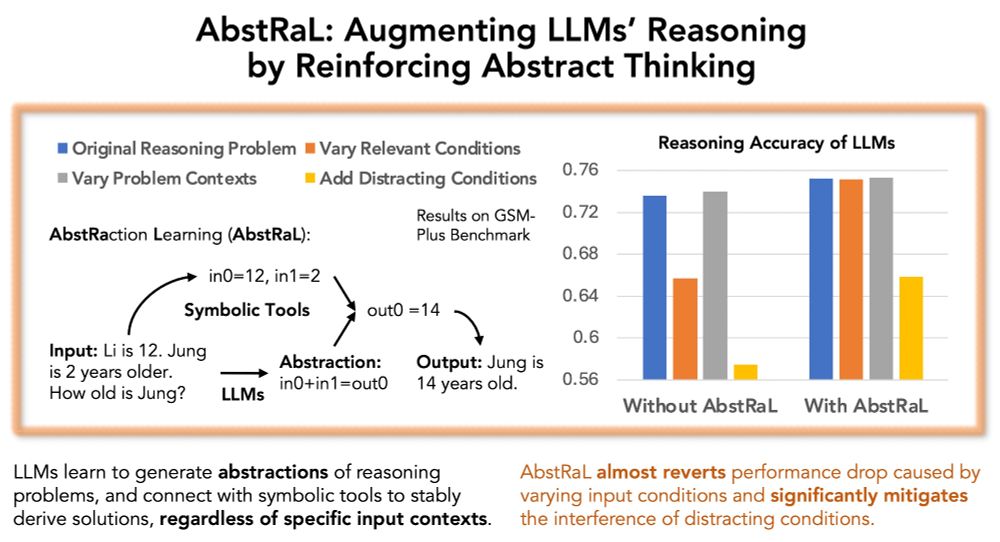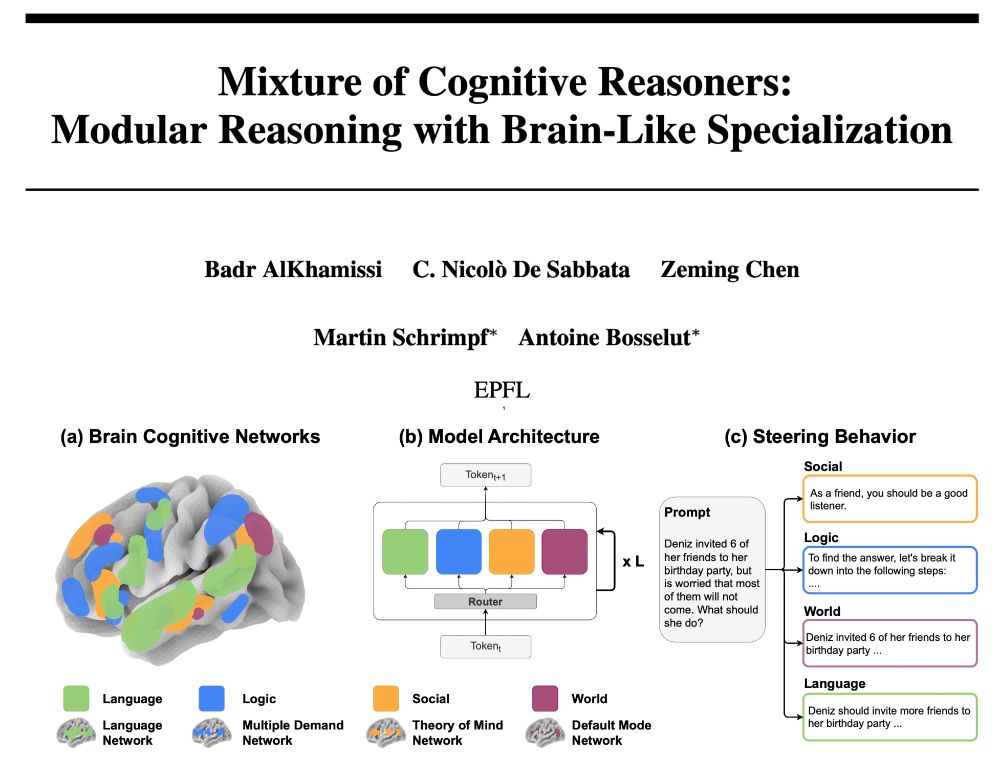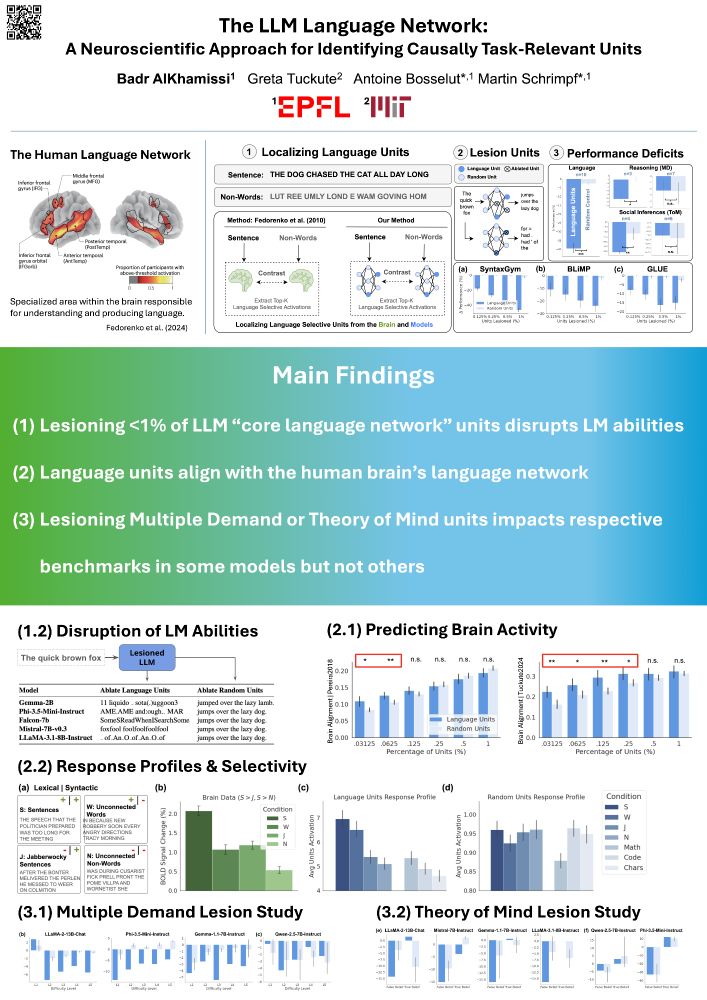Badr AlKhamissi
@bkhmsi.bsky.social
210 followers
350 following
46 posts
PhD at EPFL 🧠💻
Ex @MetaAI, @SonyAI, @Microsoft
Egyptian 🇪🇬
Posts
Media
Videos
Starter Packs
Reposted by Badr AlKhamissi
Reposted by Badr AlKhamissi
Reposted by Badr AlKhamissi
Badr AlKhamissi
@bkhmsi.bsky.social
· Jun 17

Mixture of Cognitive Reasoners: Modular Reasoning with Brain-Like Specialization
Human intelligence emerges from the interaction of specialized brain networks, each dedicated to distinct cognitive functions such as language processing, logical reasoning, social understanding, and ...
arxiv.org
Badr AlKhamissi
@bkhmsi.bsky.social
· Jun 17
Badr AlKhamissi
@bkhmsi.bsky.social
· Jun 17
Badr AlKhamissi
@bkhmsi.bsky.social
· Jun 17
Badr AlKhamissi
@bkhmsi.bsky.social
· Apr 30
Reposted by Badr AlKhamissi
Badr AlKhamissi
@bkhmsi.bsky.social
· Mar 5

From Language to Cognition: How LLMs Outgrow the Human Language Network
Large language models (LLMs) exhibit remarkable similarity to neural activity in the human language network. However, the key properties of language shaping brain-like representations, and their evolu...
arxiv.org
Badr AlKhamissi
@bkhmsi.bsky.social
· Mar 5
